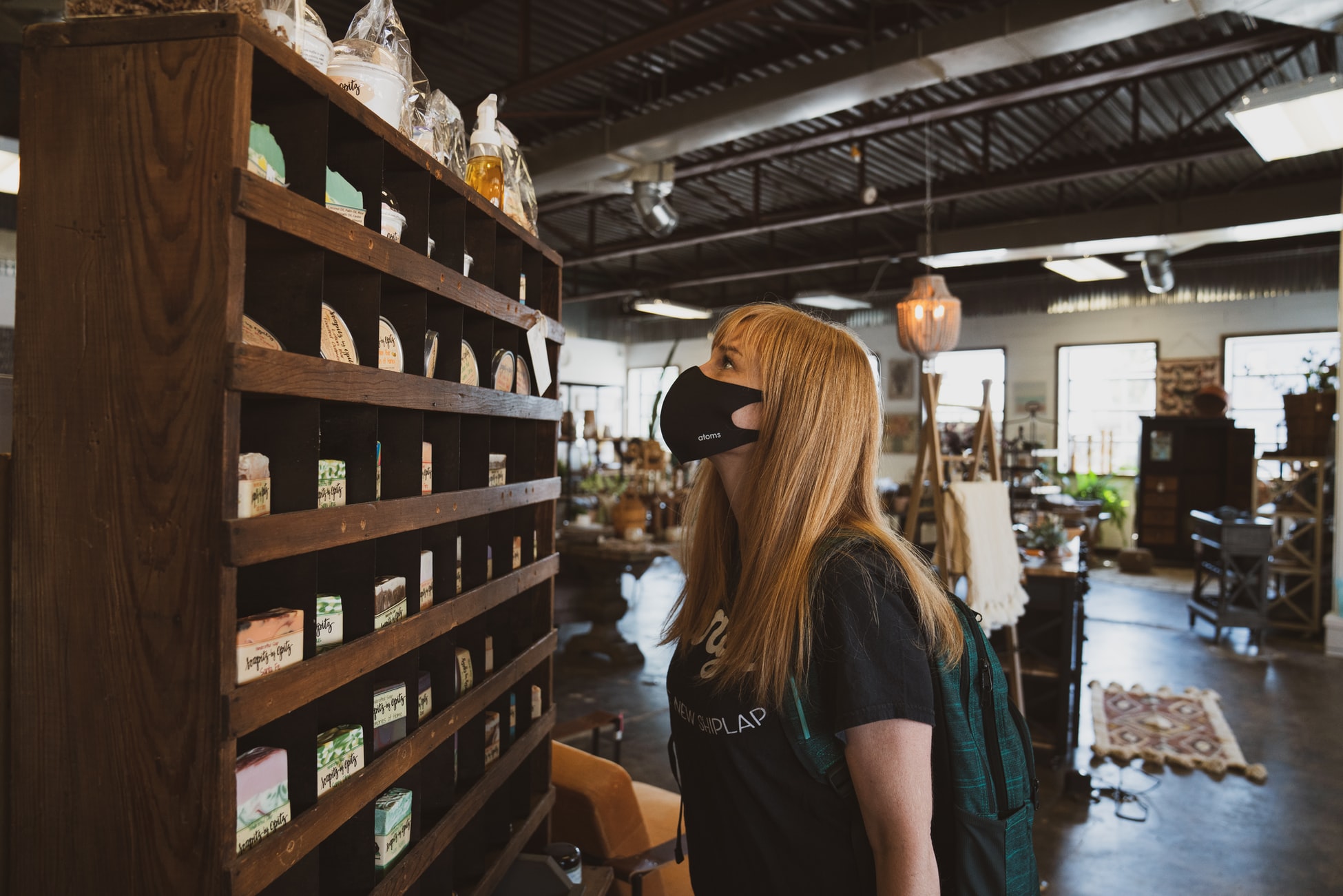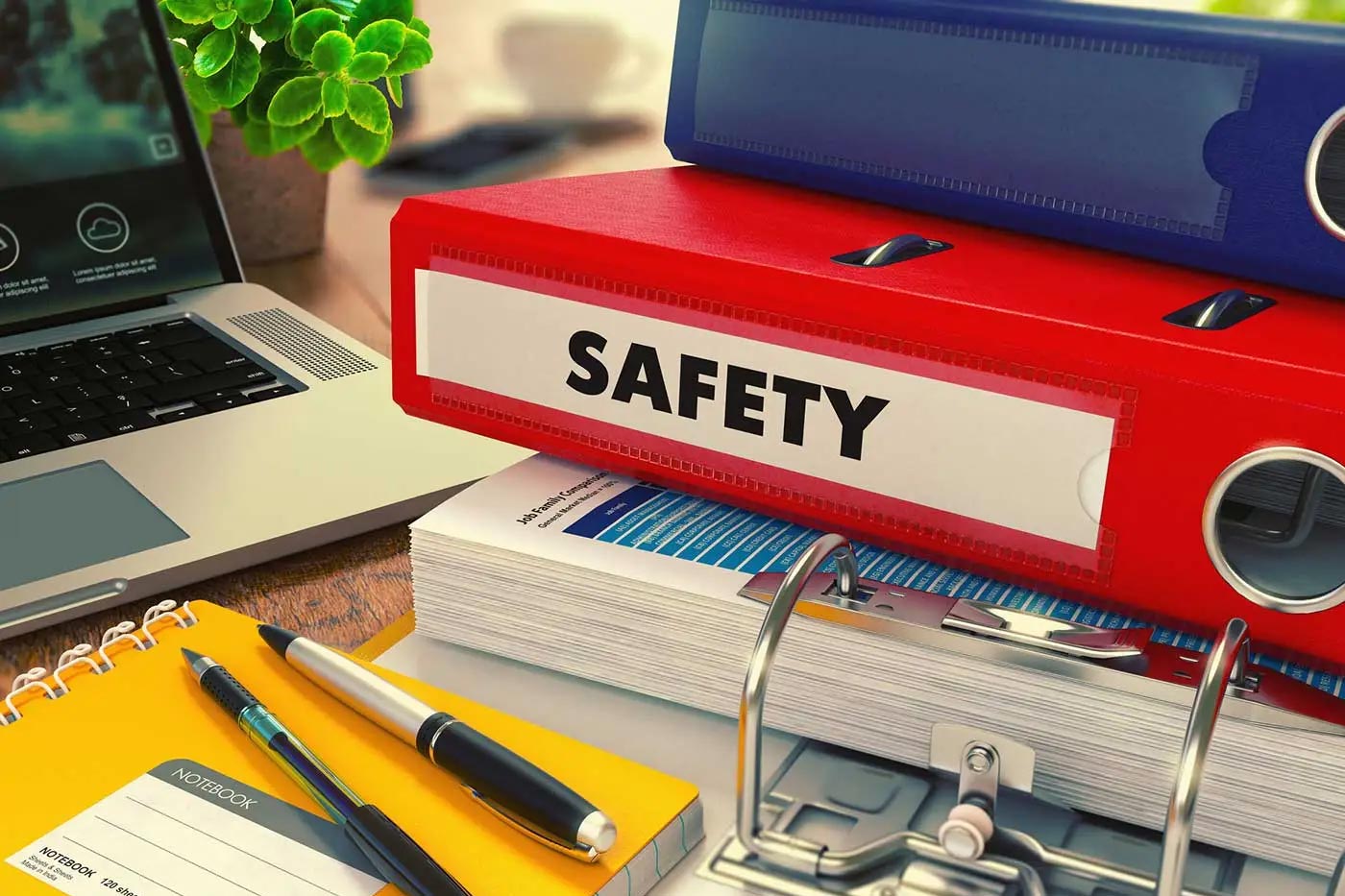BLOG
The return of non-essential retail | How to safely reopen your shop

On your marks...
When Prime Minister Boris Johnson confirmed that non-essential retail in England will be permitted to reopen from 12 April, business owners breathed a collective sigh of relief.
It’s anticipated that the devolved governments will also allow most non-essential retailers to open in April, with one week’s notice to make the necessary reopening arrangements.
Sadly, with so many familiar brands having gone into administration, the high street will look very different; however, some independent store owners are predicting a retail revival and have spent the latest lockdown investing in revamped premises and larger stores.
But each day that a shop remains closed increases the possibility that it might not reopen, costing jobs and damaging local communities. With this in mind, it is crucial that you are prepared to reopen smoothly, safely and without delay.
Get set...
Now that non-essential retailers have been given the green light, the message for employers is simple: don’t delay your opening plans, start preparing now. You may have been planning for this all throughout hibernation, but it’s important to act on the latest government guidance and to leave enough time to get organised.
Be sure you know where your business sits within each nation’s timetable and stay alert to government announcements, including any regional restrictions that may be introduced.
With reopening imminent, there are things you need to check now to ensure it goes as smoothly as possible. The starting point is to review your documentation, especially your COVID-19 risk assessment. This is a vital document, not least because it underpins the effective risk management of COVID-19 transmission in the workplace. It is also a valuable reassurance and education tool; you should communicate your risk assessment findings and the controls that have been introduced to your staff, and it may also be a good idea to tell customers about the risk assessment you have carried out, as this will give them confidence that you are COVID-secure.
Like any risk assessment, your COVID-19 risk assessment must be “suitable and sufficient”, and you shouldn’t rely on one you created right at the beginning of the pandemic as it may not be effective or compliant now.
It’s also time also to review your COVID-19 policy and the safety measures that will be in place, including social distancing, hygiene arrangements, wearing masks, arrangements for vulnerable workers, COVID testing and vaccinations, etc. Whilst less likely in a retail setting, you may have a staff member whose role can be done from home; this remains the advice where it is reasonable to do so.
The following is a basic retail reopening checklist:
- Review your COVID-19 risk assessment.
- Review your COVID-19 policy and arrangements, including testing and vaccination.
- Check that your premises are ready to be reoccupied.
- Rota staff in teams to minimise the number of different people individual staff work with – set up buddy systems where two people are required to work closely together.
- Check the implementation of social distancing measures in the workplace (What have you learned from last time? Are there any areas where gathering may occur? Would better signage or rearranging the store help people to keep apart?).
- Check your handwashing/sanitising stations are well stocked.
- Clean and disinfect. Is there scope to implement a rota and cleaning checklist similar to those seen in workplace toilets?
- Check PPE stocks – particularly masks and face coverings.
So, review your documents, remembering that things may have changed since your premises were last occupied. Be ready to share information with your workers and don’t forget, if anything needs ordering, do it now as there may be an unexpected lead time.
Related Content
Do you need support?
Speak to us for an honest, no obligation chat on:
0345 226 8393 Lines are open 9am – 5pm
... Go!
You’re finally back to business – all the planning and appraisal of your workplace will pay dividends.
Your COVID-19 risk assessment, though, must be fit for purpose and workable. It should draw on the control measures that follow the hierarchy of controls set out in health and safety legislation. This law requires you to explore measures, where possible, that don’t rely on individuals taking precautions – for example, by instead using practical physical controls such as screens or barriers to separate people.
Other control measures you should look to implement include:
- Limiting the number of customers in store – the shopping area should be one person per 10 sq. metres.
- As with essential retail, encouraging shoppers to shop alone where possible.
- Markings to indicate correct queue distancing – in and outside stores. Be aware that bigger than normal queues may form on reopening. Put in place measures to reduce the risks to customers and members of the public.
- Signage that clearly explains your social distancing measures – in and outside stores. Use ‘Wait here’ signs where it’s difficult to maintain social distancing, such as at points of sale.
- Installing cleaning stations.
- One-way systems and barriers to separate people from each other.
- More frequent cleaning.
- Limiting customers’ handling of merchandise through different display methods or the rotation of high-touch stock.
- Installing panels to protect staff at tills.
- Using contactless payment where possible.
Aside from the return of stock to the shop floor, where you no longer need to quarantine returned clothes for 48 hours, the guidance hasn’t changed much. The 48-hour rule was recently changed but kept quiet!
However, we still await clarification on the return of clothes from changing/fitting rooms, so their use should be carefully considered and only permitted where absolutely necessary.
With few major changes, it’s all about applying and sticking to the same safety precautions that existed before this latest lockdown: social distancing, wearing of masks, good hygiene, cleaning and disinfecting, adequate ventilation, etc.
Although the vaccine programme is being successfully rolled out at pace and case numbers have fallen significantly, the threat of the virus remains, and it’s not a case that reopening marks ‘business as usual’. As the Prime Minister said when announcing his roadmap out of lockdown back in February, “there is no credible route to a zero-COVID Britain or indeed a zero-COVID world”. In other words, we have to accept that it’s simply not possible to completely eliminate the COVID-19 hazard; it’s going to be with us for a long time, hence it’s all the more critical that effective controls are in place to reduce risk to a minimum.
This all comes back to the primary risk control measure of maintaining two-metre social distancing, where possible, if you have people within the same area. As such, make sure your signage clearly reminds workers and members of the public of this crucial measure – attract their attention through the use of images and colour where possible.
The big question once open, of course, is are you doing what you set out to do? It’s incumbent on you to monitor adherence to the controls, promote the right behaviours and ensure measures remain effective. If they aren’t working as intended, act.
Finally, remember that from a health and safety point of view, it’s not just COVID-19 that need to be considered and managed. Your shop will have been unoccupied for a considerable period, so now is a good time to also check that ‘basic’ health and safety risks, including fire, are still being properly controlled.
Complete the following checklist on reopening:
- Apply the hierarchy of control measures.
- Maintain two-metre social distancing, wherever possible. Where people can’t be kept two metres apart, do everything “reasonably practicable” to minimise transmission risk.
- Revisit your COVID-19 risk assessment control measures.
- Check all health and safety and fire controls remain effective.
- Monitor compliance with your rules.
- Continue homeworking for those who can.

Look out, there's inspectors about
The Health and Safety Executive (HSE) or local authority inspectors may decide to pay your newly reopened shop a visit. Retailers will be expected to have COVID-secure measures in place and to be ensuring that everyone is following them, and as the HSE gives very little warning of inspection campaigns, it’s important to keep on top of the situation at all times and have your documents ready.
If you need support preparing for an unannounced spot check, Ellis Whittam’s Health & Safety specialists can help you ensure and demonstrate COVID compliance.
To date, the HSE has received over 18,000 concerns about COVID-19 in the workplace and around 1,400 confirmed outbreaks in workplaces have been identified and referred to the HSE. COVID is therefore still very much on the agenda, and complacency can be costly – the last thing any business owner wants after months is enforcement action.
Elizabeth Smith Veterinary Practice
Reopen safely with specialist support
If you feel you would benefit from expert assistance, our Health & Safety specialists can help you to operate safely and compliantly through COVID-19 and beyond so that nothing holds your business back. From help formulating risk assessments and developing policies to 24/7 advice and simple software, our fixed-fee service is the perfect solution to your business’ health and safety needs, enabling you to meet your responsibilities confidently and be regulator-ready at all times.
For more information, call 0345 226 8393 or request your free consultation using the button below.
Sign up for the latest news & insights
Resources
Latest News & Insights

Work from wherever? | Things to consider before allowing employees to work from abroad
BLOG Written by Alexandra Farmer on 25 May 2022 A few years ago, the idea of working from anywhere in the world seemed like a pipe dream.

Reduced workforce? Here’s 5 health and safety areas you need to revisit
BLOG Written by Charles Spencer on 18 May 2022 In 2022, a growing number of businesses have moved, or are in the process of moving,

Fee for Intervention | Why health and safety breaches could cost your business more in 2022
BLOG Written on 16 May 2022 It’s a well-known fact that poor health and safety practices cost businesses money. And with the HSE recently announcing yet another

Remote work isolation | How employers can help combat loneliness
BLOG Written on 12 February 2021 While the benefits of remote work are seemingly boundless, often overlooked is the isolation and disconnectedness that it can

Time off for getting married or moving house
BLOG Written on 12 May 2022 There are certain big life events that can sometimes get in the way of work. Whether it’s a wedding

Recent cases highlight continued work at height failings
BLOG Written on 6 May 2022 Working at height continues to be the leading cause of work-related fatality. According to most recent HSE figures, these

Managing organisational change | How to keep people happy
BLOG Written on 28 February 2022 In the direst of circumstances, humanity’s true capacity for adaptation and perseverance can be realised. Where the business world

5 ways to combat 2022’s recruitment challenges when you can’t pay more
BLOG Written by Christian Vincent and Hannah Copeland on 15 April 2022 In 2022, recruitment and retention are fast becoming employers’ biggest challenges. With people

A war of words | Managing employees’ political views on the Russia-Ukraine conflict
BLOG Written by Lesley Rennie on 13 April 2022 The war in Ukraine, and the daily news reports of fatalities, continues to spark conversation in






